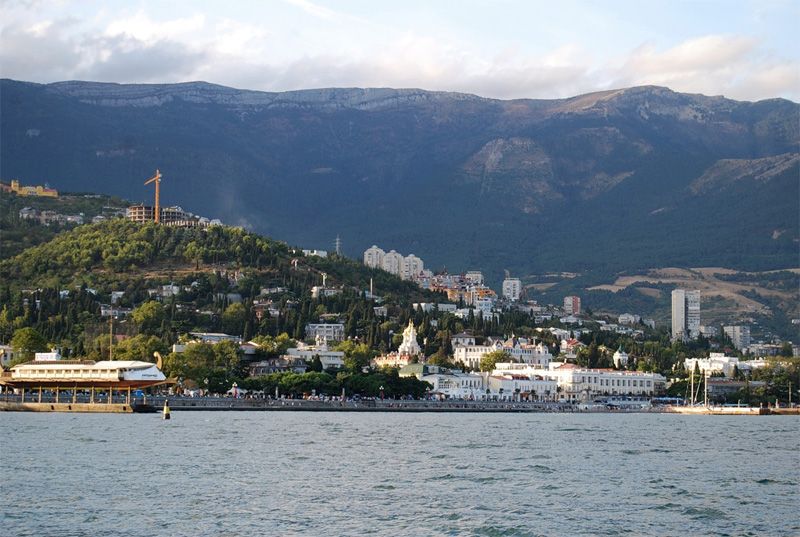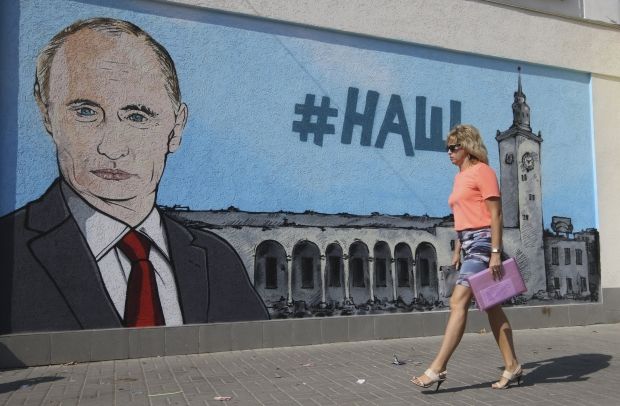
Why was Crimea attached to Kalmykia
The decision of the Russian leadership to disband the "Crimean Federal District" and include the occupied Crimea in the Southern Federal District is an expected operation of the Kremlin, which Moscow hopes to use to bypass part of the international sanctions and to improve control over the distribution of plundered public funds.
On July 10, 2015 the staff of the Russian government announced the impending abolition of the Ministry for Crimea. The decision was taken due to the fact that the ministry had been created for the transitional period, and now, the administrative, legislative and economic integration has completed. At the same time Russia's Vedomosti newspaper has reported that, following this decision, the president’s representation in Crimea may also be dismantled, and the peninsula may become part of the Southern Federal District, joining Rostov, Astrakhan and Volgograd regions, Krasnodar Territory and the Republics of Kalmykia and Adygea . Thus, the decision to put Crimea into the SFD is a sign of the completion of the internal absorption of the peninsula by the Russian Federation, pre-planned by the Kremlin.
The value of this solution shouldn’t be overestimated. The Institute of federal districts is not enshrined in the Russian Constitution, which determines its secondary nature in the territorial system, which is based primarily on division into subjects of the Federation.
Creating federal districts initially meant the introduction of a new, subsidiary management level, designed to optimize the control from the center over the huge, and rather fractional, Russian land. This layer helped strengthen the managerial hierarchy through the creation of the institute of federal inspectors responsible for certain geographical parts of the Russian regions. Therefore, the fact that Crimea was deprived of its “Crimean Federal District” status is only relevant in the context of its integration in the other federal district, i.e. the transfer of supervisory functions over the peninsula to the Southern Federal District. Thus, the work with the Crimean regional elites will not be carried out anymore within the peninsula, as a separate federal district. It will be performed by the envoy to the Southern Federal District, which will allow Moscow to structure the local elites.
At the same time, control over the activities of regional elites will be developing toward its focusing in the interests of the center. Management of electoral processes and personnel policies at the regional level, although not being part of the direct functions of the envoys, is still implied if there is a task to boost management effectiveness, and thus clear the regional authorities of "inadequate" individuals. This indicates an emergence of a series of cause-and-effect circumstances that underlie the decision to include Crimea in the Southern Federal District.
Control of financial resources
In 2015, the Russian Government, according to TASS, decided to punish the Crimean government for inefficient disbursement of public funds. Moscow has instructed the Ministry of Economic Development and the Ministry of Finance of the Russian Federation to submit proposals for the punishment of the de-facto authorities of Crimea in connection with the freezing of funds from the federal budget allocated to the development of the region. At the time, Sergei Aksenov (leader of local “government” appointed by Russia) proposed that the so-called “republican government” be provided authority to use federal funds without coordination with federal agencies, by analogy with the same powers of the Russian president. It is obvious that the Kremlin was at the very least surprised with such an initiative. This led to the decision that, on the contrary, restricts the freedom of use of public funds by Crimea, as it will be part of the SFD. In 2015, four of the five ministers of the so-called Aksyonov’s government, who were dismissed, were in one way or another charged with lobbying the corruption schemes, or embezzlement. For example, “transport minister” Anatolii Tsurkin was fired for failing to organize quality operation of the ferry, while the company called Crimean Ports, controlled by Tsurkin, did not respect the deadlines of works and used budget funds with violations. Dismissals of “minister of resorts” Yelena Yurchenko, “industrial policy minister” Andrei Skrynnik and “head of the tax inspectorate: Nicolai Kochanov has similar grounds. This was Moscow’s response to Aksyonov’s desire to build his own vertical in Crimea following the example of Chechnya with a high level of corruption, which is now reflected in the decision to lower the federal status of the Crimean de-facto leadership, and therefore, the level of their access to resources.
The decision of Moscow has an apparent objective to build its own vertical in Crimea and resolve conflicts, which, for example, earlier sparked between the group of Sevastopol Governor Mr Menyailo and presidential envoy Mr Belaventsev and the team of the ex-speaker of the Legislative Assembly Alexei Chaly. It is therefore logical to expect that future reshuffles in Crimea will see appointments of officials from among the non-Crimean elites. There is a high probability that under the leadership of ex-Prosecutor Ustinov’s rule as an envoy to the SFD, the layoffs in Crimea will continue.

In 2014, the tranches allocated for the “Crimean Federal District” amounted to RUB 125 billion. In 2014, another RUB 120 billion was transferred. The program titled "Social and economic development of the Republic of Crimea and Sevastopol until 2020" provides for financing totaling RUB 708.05 billion, or nearly $13 billion, of which $12 billion is public funds. Thus, such a high level of budgetary expenditure requires tighter control over resources from the federal government, which can only be achieved by distancing the new Crimean elites from the funds distribution system at the state level.
Playing hide and seek with sanctions
The inclusion of Crimea in the Southern Federal District, according to Moscow’s plot, will also allow the Kremlin to circumvent more flexibly the sanctions imposed on economic transactions with the annexed peninsula, by manipulating the jurisdiction of entities. The probability of extension of sanctions to the entire Southern Federal District is very low.
In addition, the operation "Liquidation of the ‘Crimean Federal District’" facilitates resolution of issues with logistics and security. The inclusion of Crimea in the SFD can also indicate a temporary refusal of the Russian Federation from pushing for the land corridor to Crimea from the temporarily occupied areas of Donetsk and Luhansk regions. Crimea’s energy and logistics projects with the Russian mainland’s Krasnodar territory will now be implemented within a single federal district, making it easier for Moscow to manage and control them.
Anatolii Baronin, Da Vinci AG, for UNIAN

